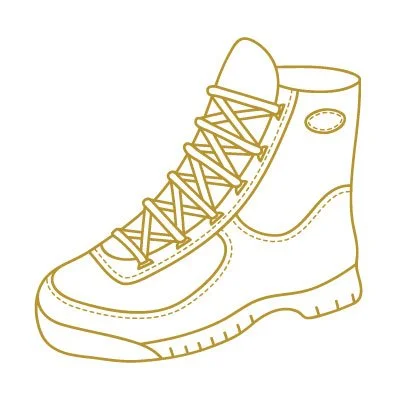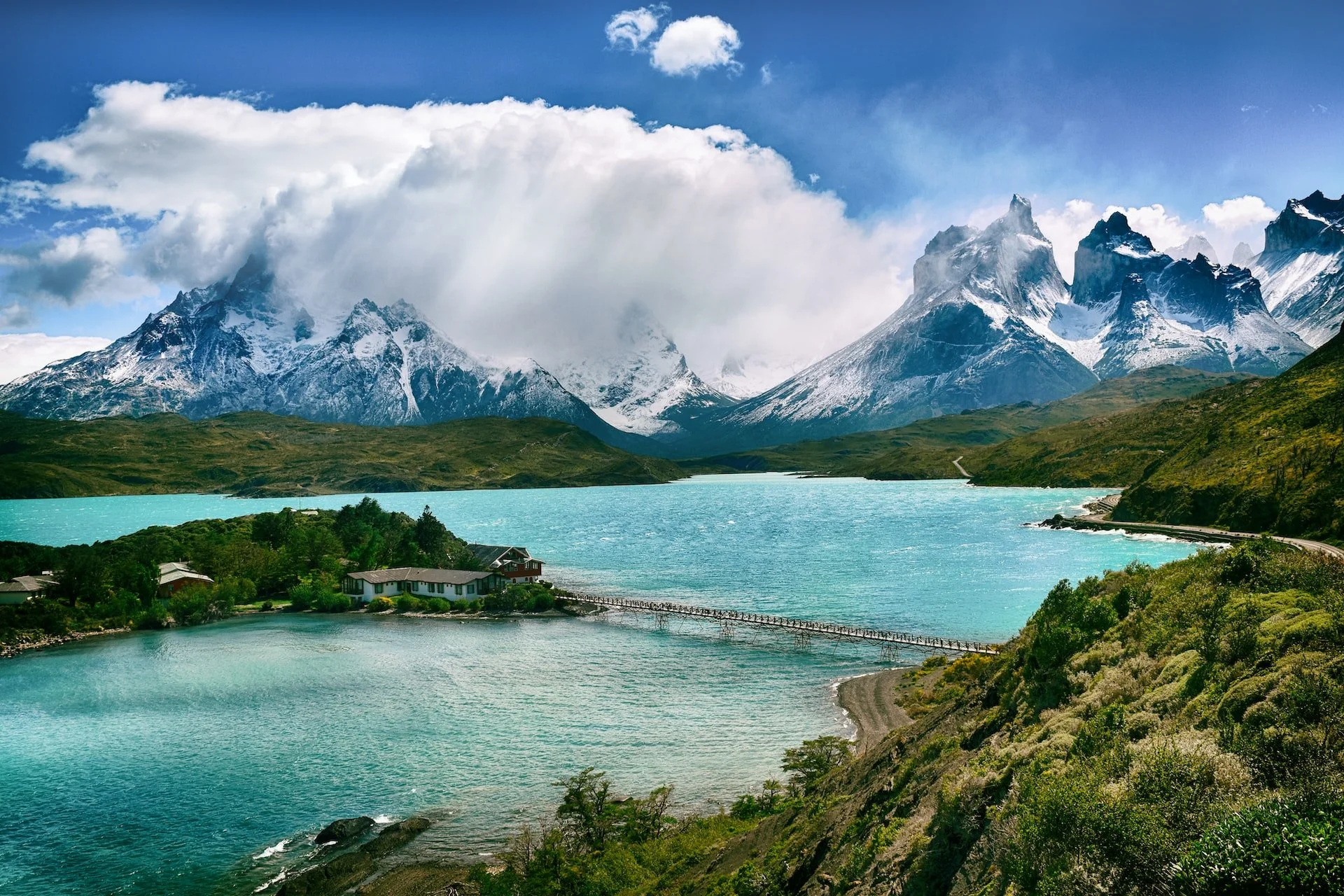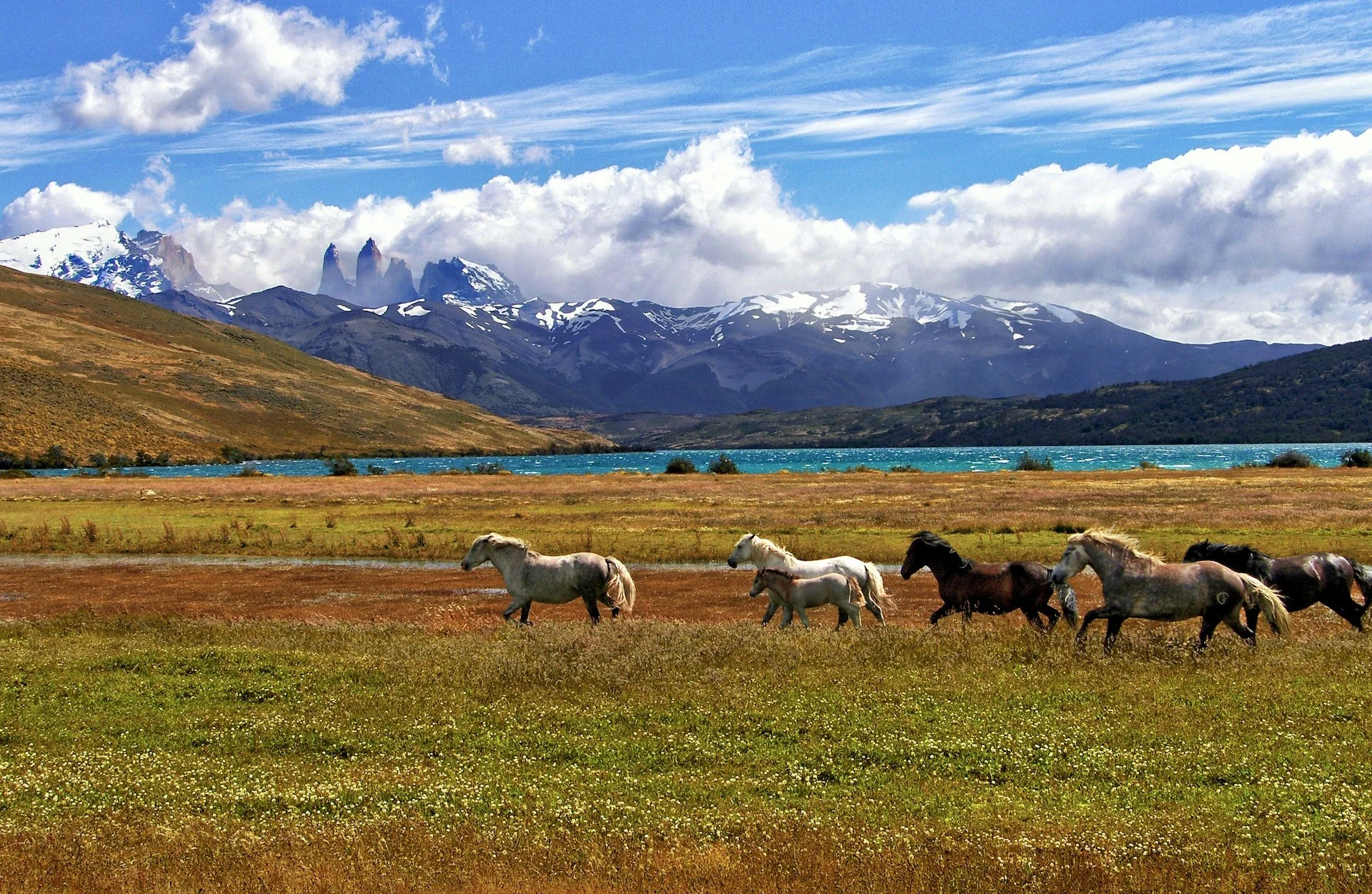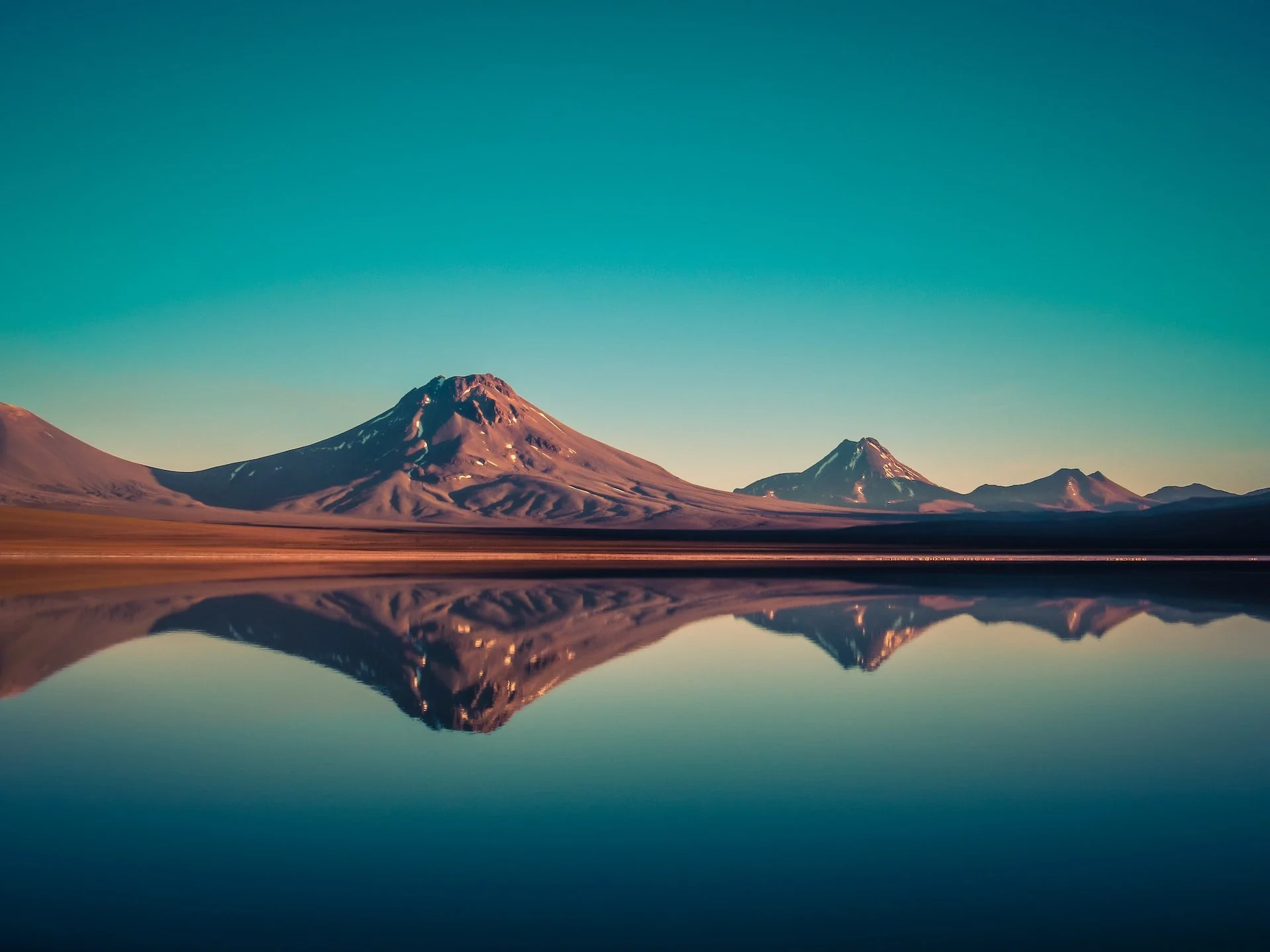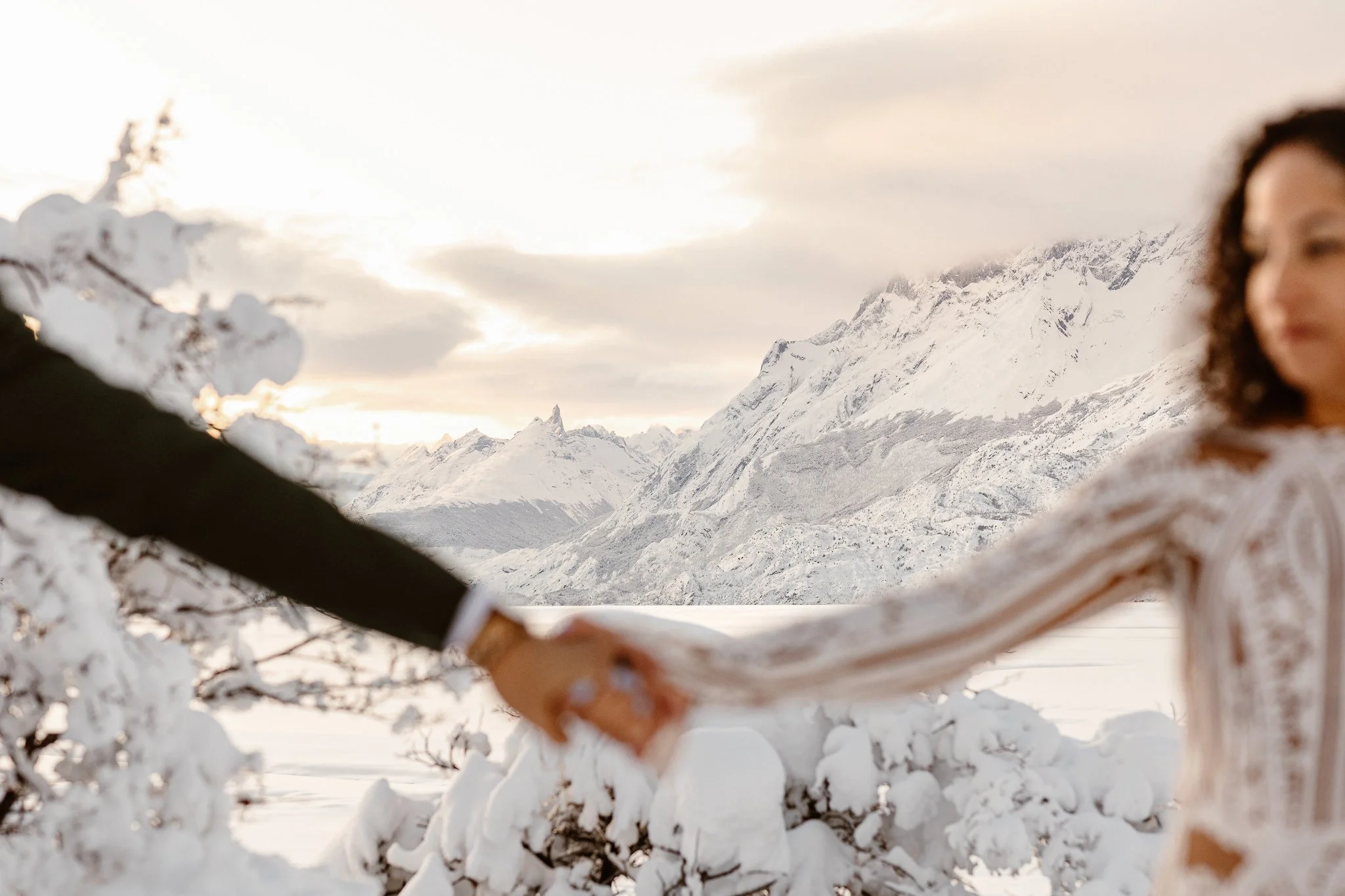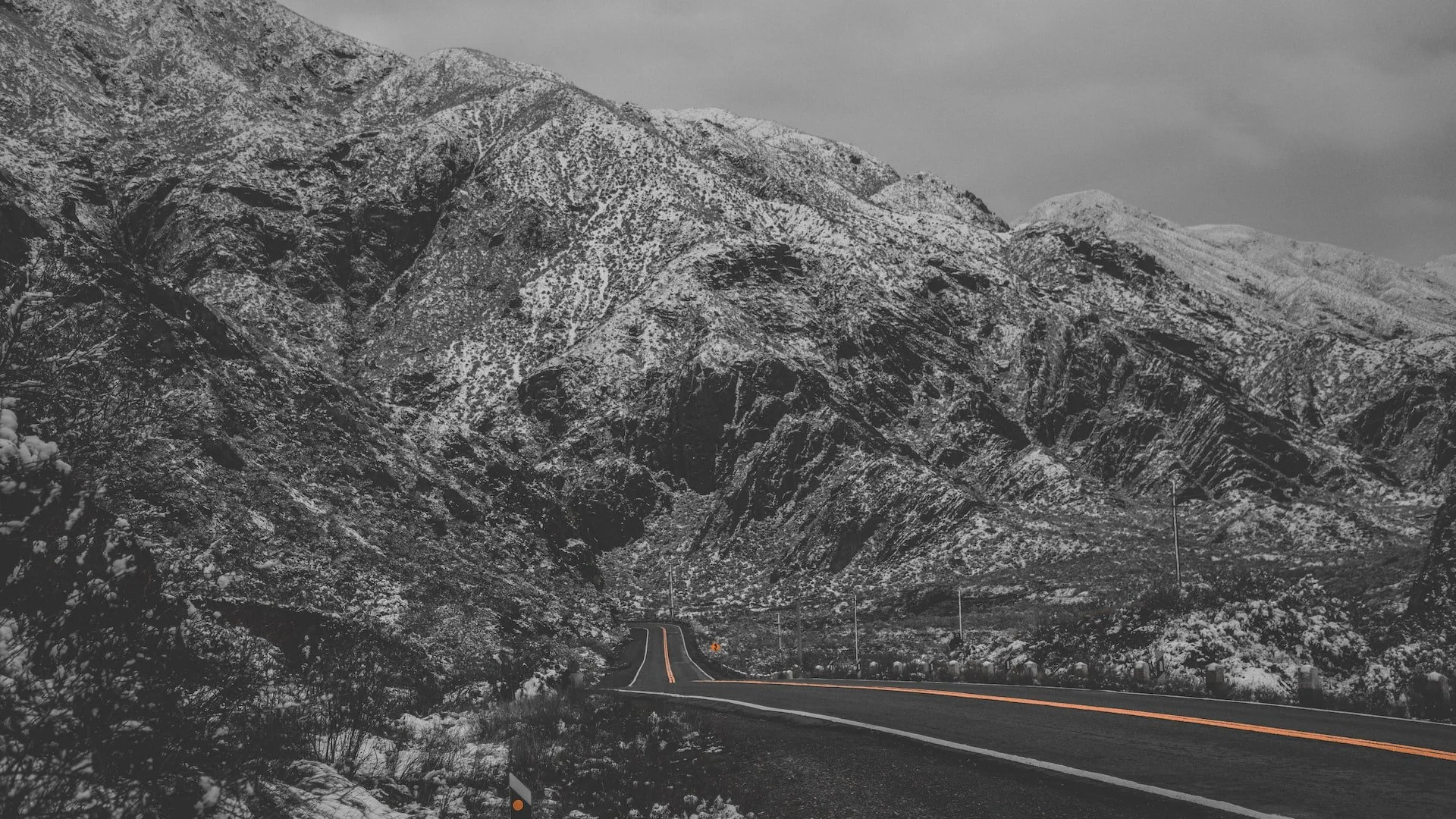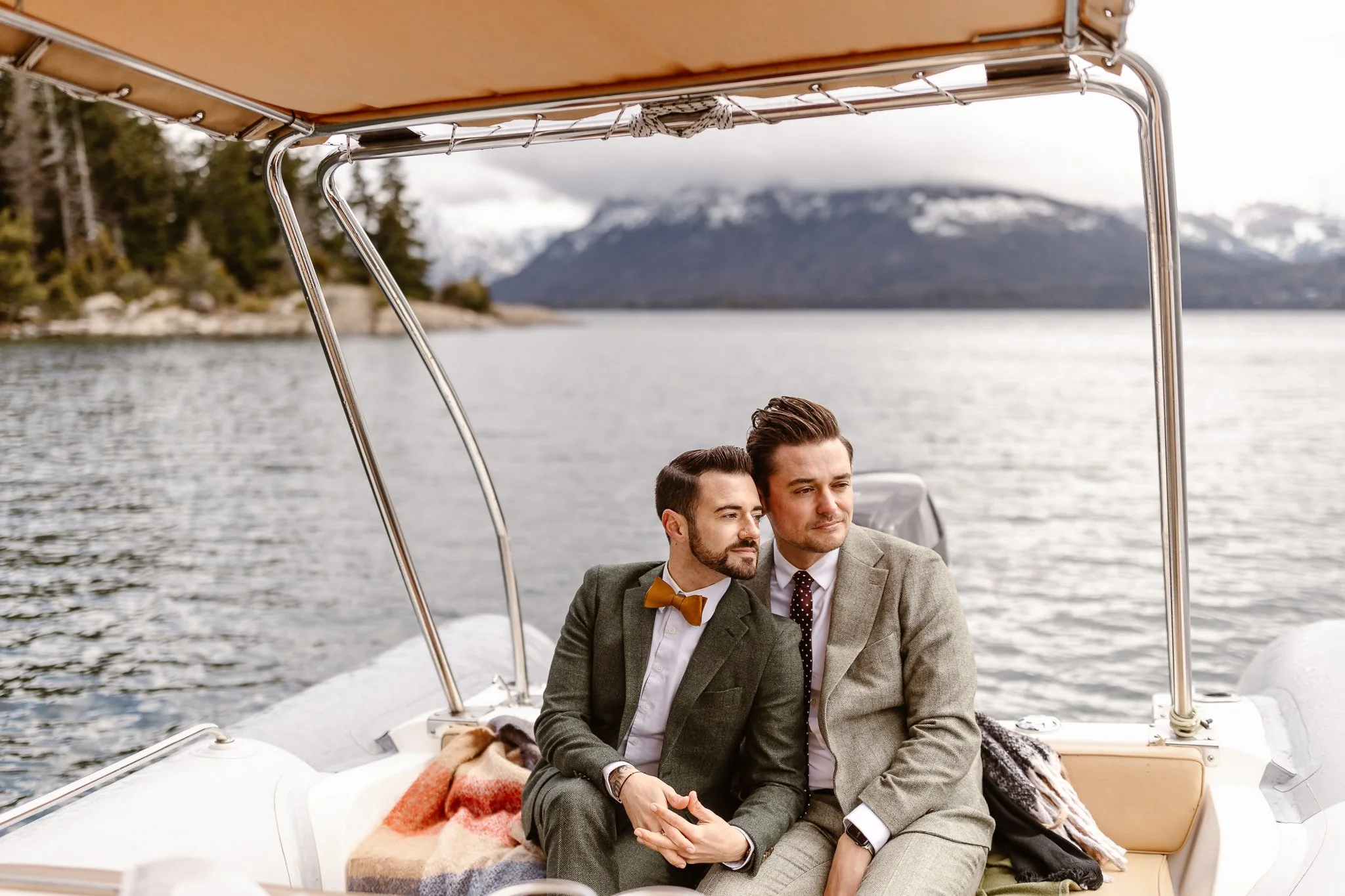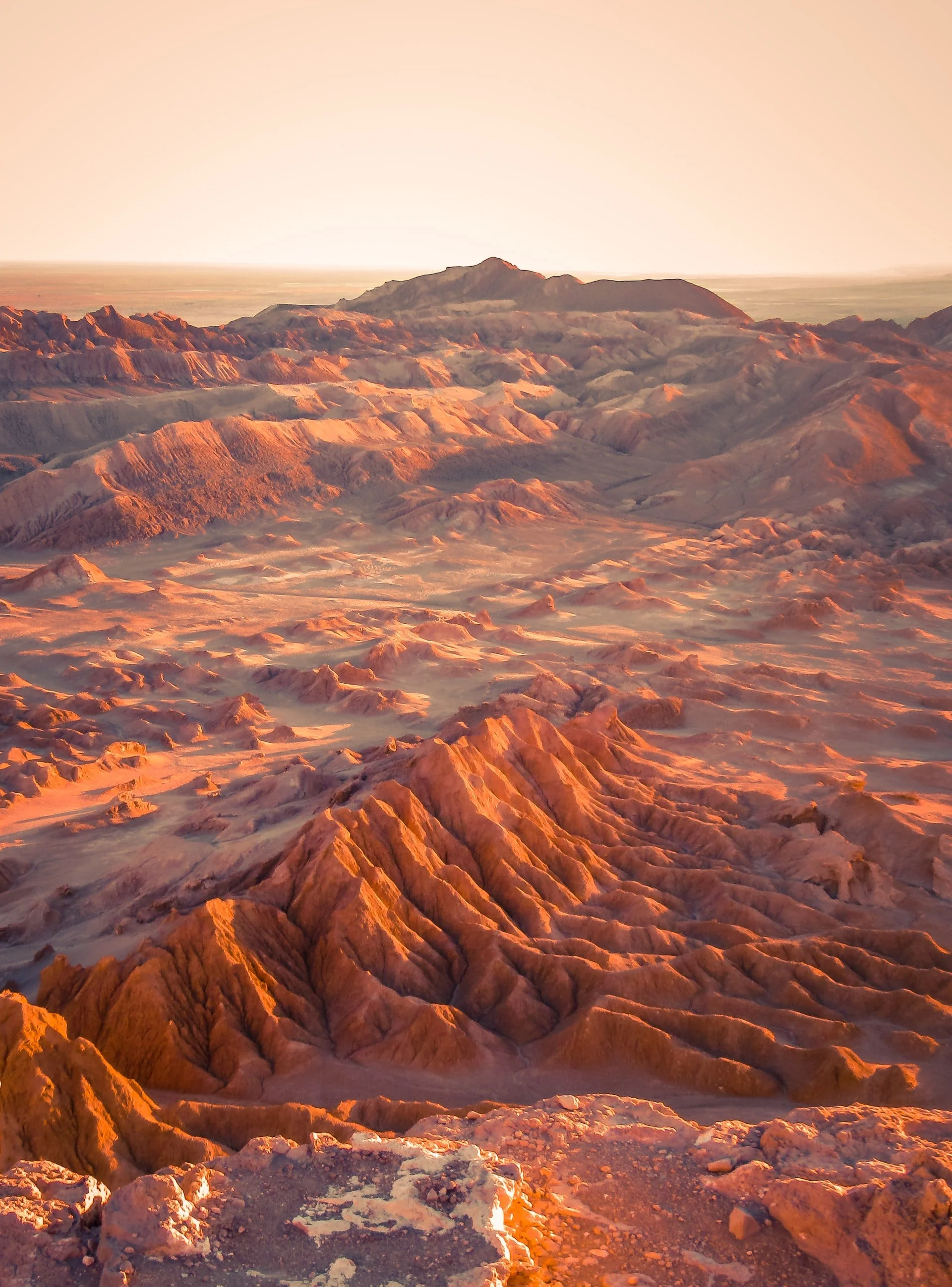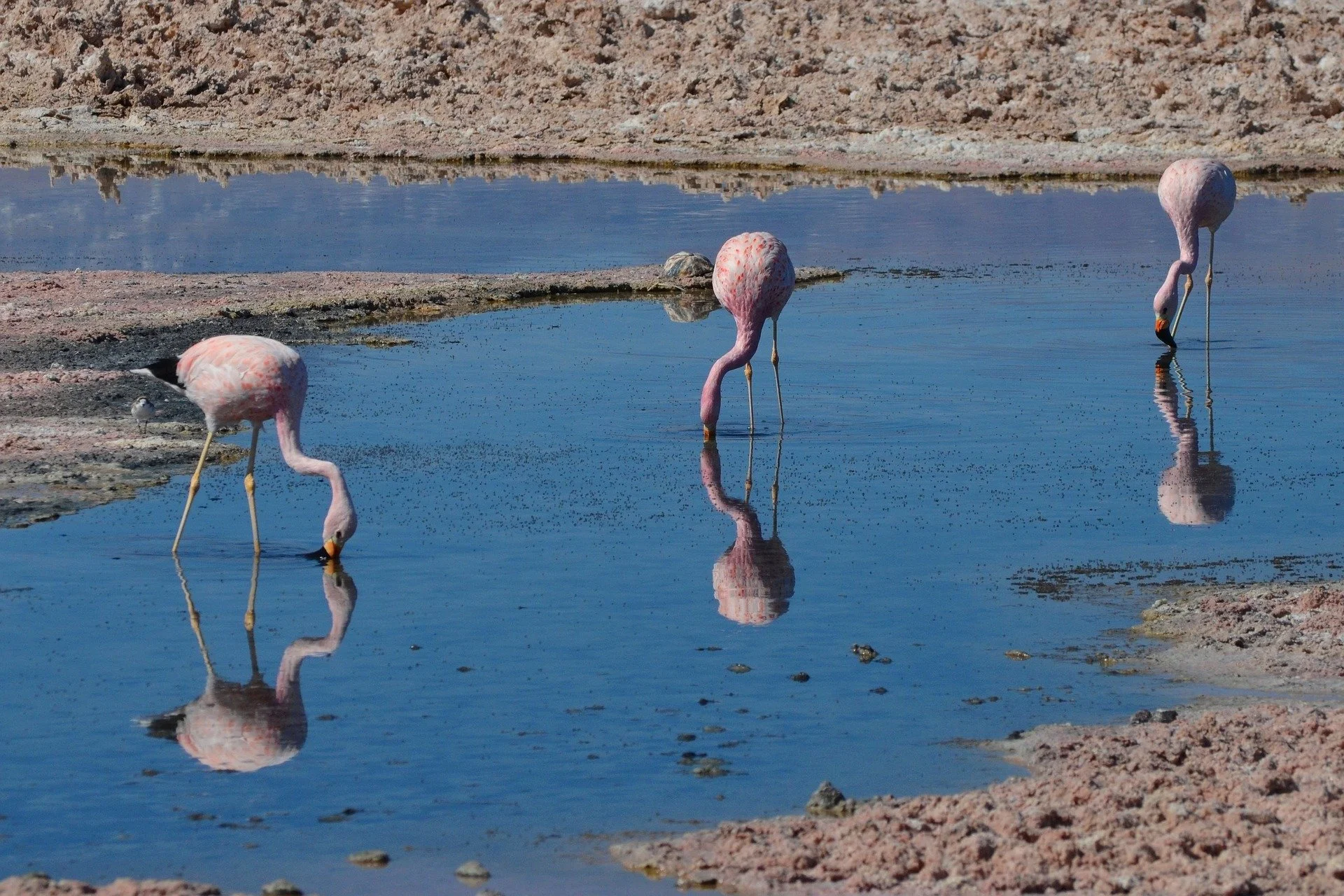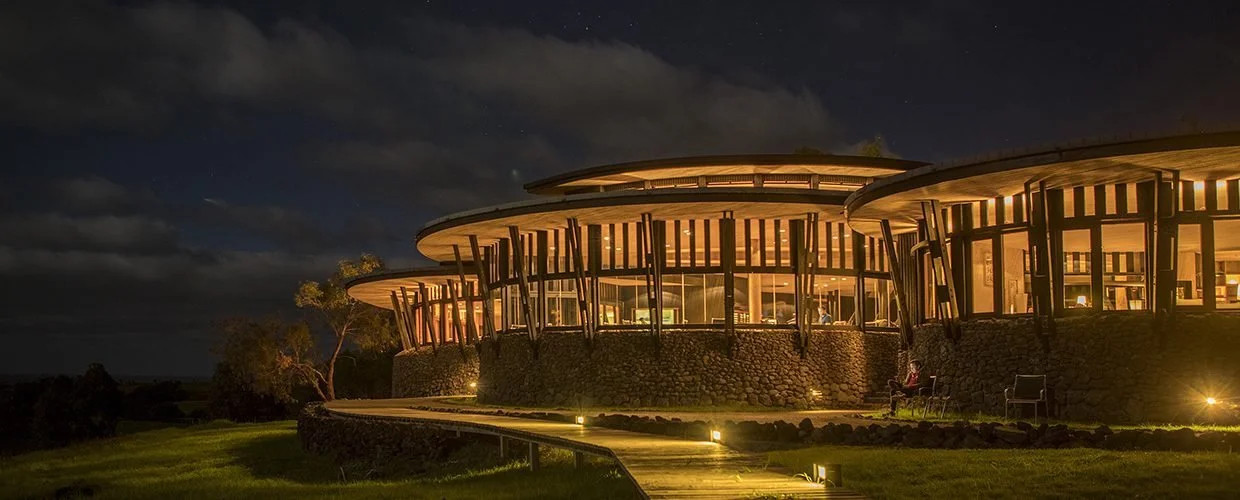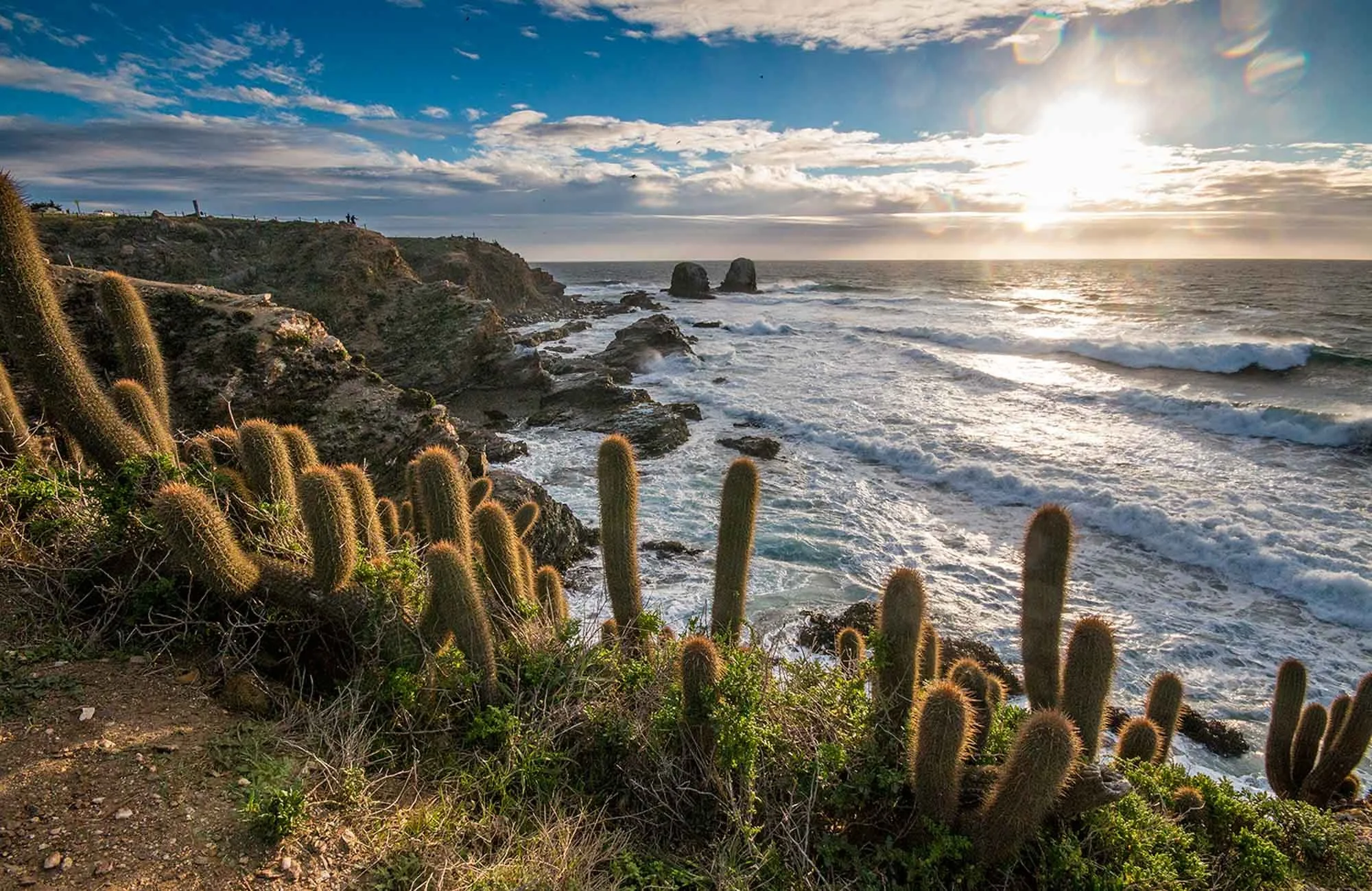Getting Married in Chile | Your Chile Wedding + Travel Guide | Updated for 2026
Updated November 7th, 2025
Updated for the 2026-2027 Wedding Season
Plan Your Destination Elopement or Wedding in Chile!
When you want to combine tradition and adventure in your elopement plans, you’ll find everything you’re looking for in Chile. This beautiful country filled with natural resources is perfect for a destination wedding or elopement. As you travel through Chile, you’ll feel like you want to photograph every moment so you can revisit and share your memories for the rest of your lives.
That’s where I come in. Hi, I’m Andrea. I’m an adventure elopement photographer based in the gorgeous foothills of the Rocky Mountains. And, I was born and raised in Chile, the amazing South American country that lines the continent along the Pacific Ocean. Consider me your expert guide to show you why my home country Chile is the picture-perfect choice for your destination wedding adventure.
More About Me
Quick note: As an affiliate member for REI, VRBO, and Amazon, this post may contain links to recommended products or services that I use myself and love. If you make a purchase after clicking one of these links, I earn a small commission (at no extra charge to you). I promise any latte money earned ☕️ will be used to create even more useful content like this! Thanks!
Table of Contents
Real quick—because I get asked this a lot: Can foreigners get married in Chile? Absolutely. However, it’s important to know that it’s easiest to get legally married in your country of origin and hold the ceremony in Chile. More on that below.
What is Chile, South America, Famous For?
If you look at a map, my home country looks like a long strip of land along the western coastline of South America. Chile stretches this way for nearly 4,000 miles. Our capital city is Santiago, which is in a valley between the Andes and the coastal mountains called the Chilean Coast Range.
Chile may be best known for the incredible diversity found in its part of Patagonia. I believe this area is so magical that I’ve devoted an entire section of this guide to it. I’ve also created a Patagonia Elopement Guide that my couples have found essential.
Chile’s Patagonia park is called Torres del Paine National Park. It’s icy, windswept, and absolutely one of the most romantic spots on earth for those who love the outdoors and adventure. Even if you decide to elope to one of Chile’s gorgeous coastal cities or in the solitude of the Atacama Desert, you’ll want to make sure you step foot in Patagonia–it’s truly unforgettable.
Chile also attracts stargazers from around the world. The Atacama Desert is perfect for scanning the night sky because it has the clearest night skies on the planet. Since Chile is in the southern hemisphere, you can find the Southern Cross, or Crux, Orion in the summer, and bright swaths of the Milky Way. Sound like your kind of elopement setting? Check out my guide for “Eloping Under the Stars” to get all of the details!
Another wonderful (and romantic) famous fact about Chile is that it's the country of renowned poets Pablo Neruda and Gabriela Mistral. Both of these writers won the Nobel Prize in Literature. Before you embark on your travels, read some of their poetry for inspiration and get your creative brain sparking.
As a Chilean wedding photographer, I find no end to the natural beauty I can capture with my camera there. I love sharing my homeland with couples who seek to celebrate their lifelong commitment to each other in this once-in-a-lifetime destination. If you would like help planning and documenting your Chile wedding or elopement, read on.
There’s lots to consider, but you don’t have to do it alone. I’m from there and ready to be your expert guide and wedding photographer. In this complete guide to planning your adventure elopement in Chile, you’ll learn everything you need to visit and marry in the Atacama Desert of north Chile and the national parks in the south (run by Chile’s national forest organization, CONAF), including Carretera Austral.
Eloping Abroad
As you’re probably aware, a Chile destination wedding of this magnitude takes a lot of planning. With my personal experience and extensive knowledge of Chile, I can serve as your wedding photographer and your local expert before, during, and after your journey. Together we can plan your epic wedding day.
What Makes Me Qualified?
With a decade of experience as a travel elopement photographer, I understand how to help you reach your destination and keep your special day on track. Cold hands or a hot spot on your ankle from hiking to that perfect spot? I’ve got you covered with hand warmers and a bandaid. Did I mention I’m also CPR and first aid certified?
I also place a high value on inclusivity. As a Latina, my culture and identity are key tenets of my identity. I celebrate the diversity of all body shapes and sizes and celebrate love for the sake of love. Same-sex marriages are welcome and supported here! (More on that below.) As your travel elopement photographer, I aim to tie in the elements of who and your partner are in one-of-a-kind locations.
Booking me to document your international elopement means you’ll get access to my Client Resources that outline the gear you need, the travel requirements and expectations, and the overnight options that will make your elopement both romantic and adventurous. This guide shows just a snippet of the information I provide for planning a trip of this grandeur!
The Legal Side of Your Chile Wedding
You may be wondering…
Can foreigners get married in Chile? Absolutely. However, it’s important to know that it’s easiest to get legally married in your country of origin and hold the ceremony in Chile.
If you really want to legally get married in Chile and do the official paperwork abroad, ask me for more details, and understand that it involves visiting the US Embassy in Santiago after your civil ceremony, potentially adding more time to your trip, as well as bringing along birth certificates and other sensitive original documents. It is possible, but far less common. Be sure to share your plans with me in our initial consultation, and know that I’m here to answer any questions you may have.
Same-Sex Marriage in Chile
As of 2022, same-sex marriage is legal in Chile. In 2021, the country’s conservative president surprisingly passed the law, which came into effect on March 10, 2022. While same-sex couples had been able to enjoy the legal benefits of civil unions since 2015, they still encountered inequality relating to children and their care. Under the new law, both partners are now able to get legal recognition as parents. ¡Órale!
Your Chile Travel Plan
Seasons in the Southern Hemisphere
When you’re planning to travel to Chile, remember their seasons are the opposite of when they occur in our northern hemisphere. So, if you’re looking for a summer Chilean wedding experience, aim for November through March. Alternatively, if you’d rather have a winter-romantic elopement at one of the famous ski resorts, shoot for June, July, or August.
Flying Into Chile
Chile’s primary airline—and the largest in South America—is LATAM, with departures from major US and European airports. Other airlines with routes into Chile include American Airlines, Delta, Jet Blue, United, Air Canada, British Airways, Air France, Cathay Pacific, Japan Airlines and Korean Air. Check your favorite booking site for the best options.
If you can find a good non-stop flight from the US, you can get to Chile’s largest airport, Santiago Arturo Merino Benítez International Airport (SCL), in less than 10 hours. Other airport options you may see are:
El Tepual International Airport (PMC), which is close to Puerto Montt
Presidente Carlos Ibáñez del Campo International Airport (PUQ), which gets you close to Punta Arenas if you’re Patagonia-bound
Cerro Moreno International Airport (ANF) near to Antofagasta
Diego Aracena International Airport (IQQ) in Iquique
Temuco Airport (ZCO) for easy access to the lush Chilean rainforests
Carriel Sur International Airport (CCP) if you’re eloping near Concepción, my home town :)
Chacalluta International Airport (ARI), close to the Peruvian border
Driving Into Chile
Travelers can cross at the borders with Argentina at the east and with Bolivia and Peru at the north. If you’re coming in from Argentina, you’ll find at least 30 border crossings. In the winter, however, many of them will be closed.
For a more adventurous journey, you can cross via the Paso Internacional Los Libertadores, or Cristo Redentor, in the Andes. This wild drive will take you through the mountains between Mendoza, Argentina, and Santiago, reaching elevations of 10,500 feet.
Although most of the border crossings are normal paved highways, some of them in the south or north in Atacama are only gravel. They often close because of snow, so we’ll need to check they’re open ahead of time if that’s the way you want to go. A quick call to border authorities or the nearest tourism office will find you the latest updates on conditions—just let me know if you need this native Spanish-speaker to help you out here.
Cruise to Chile
Mix in a little luxury with your adventure elopement when you take a cruise to see all the natural treasures Chile offers. Cruise itineraries feature shore excursions into colorful port cities and incredibly scenic parks. I’m happy to photograph anywhere you want to go in Chile and I believe a cruise, with its unique perspective on the country from the sea, combined with hikes or city walks, would be amazing.
Plus, the cruise lines take care of all the travel details so you can totally enjoy your stress-free wedding day and honeymoon! Check what’s offered by the major cruise lines. If you do find a cruise to book, mention your Chile elopement plans. Maybe some Champagne will appear when you return to the ship as a married couple.
A more athletic option is available between Bariloche, Argentina and Puerto Varas, Chile, on Cruce Andino. Take a boat through several gorgeous lakes in the Andes combined with your choice of bus or bike ride over the land portions. Choose a one- or two-day excursion for a most charming and intimate Chile wedding. Speaking of Bariloche, check out T + N’s romantic excursion elopement in the foothills of the Andes.
Once you decide how to get there, the next big question is: Where to actually have your micro-wedding or elopement? Generally, most couples marry officially in their home countries before arriving in Chile. Then, they are free to exchange vows and celebrate in whatever way is most meaningful to them in their choice of some of the most beautiful destinations on the planet.
The Atacama Desert
The region’s Valle de la Luna (Valley of the Moon) offers unusual rock formations and dunes that make it seem as if you’re on the moon. The lunar panorama with a setting sun turning all the rocks vibrant shades of pink would make a wonderful backdrop for a destination desert elopement. The Chilean desert also offers many adventure activities such as mountain biking, hiking, camping, and exploring the many villages that promote traditional life.
All the parks in the Atacama Desert require an entrance fee which can range from $3 to $20, which is well worth it to visit this incredible place located over a 990-mile area between the Pacific Ocean and the Andes. It’s the driest non-polar spot on the planet and parts of it are famous for resembling the surface of the moon and Mars. It also offers the planet’s best stargazing due its total lack of light pollution and is the site of several important observatories.
Although the desert receives an average of six rainy days each year, it’s not oppressively hot because of the altitude. Fun fact about the Atacama Desert: During the summer, flocks of flamingos will gather, adding rosy flushes to the landscape.
Jump to Atacama Desert Hotels
Carretera Austral
Chile’s iconic Carretera Austral (or “Southern Highway”) is also known as Route 7 and is a 1,240 kilometer highway starting in Puerto Montt and running south to Villa O’Higgins. It also passes through Patagonia and many other wonderful parks, so if you’re traveling Chile by a rental car, you’ll likely end up driving at least a portion of it. It’s one life-changing experiential road trip!
The Carretera Austral will be the highway you’ll take into Patagonia from northern Chile. As you travel into northern Patagonia, you’ll feel as if you’re in a very remote part of the world. That’s because this part of Chile is sparsely populated with less than one person per square kilometer living here. You’ll also find unpaved stretches of the highway, but the unpredictable road conditions only add to the mystique and sense of adventure.
The best way to explore the Carretera Austral is to have a two- to three-week plan you can modify if something unexpected happens. Consider a route where you can pick up and drop your car rental at the same place, and try to get a vehicle with high clearance so you can avoid problems when encountering ruts and potholes. Also, check for a spare tire before you leave and whether you have enough insurance to travel on the Carretera Austral. Find and buy a good waterproof map like this National Geographic map to carry with you. If you’re traveling to South Chile, I recommend this travel guide.
Neither 4x4s nor fluency in Spanish is necessary for this amazing road trip, but a 4x4 could help you feel more secure on the unpaved bits and knowing a few phrases in Spanish will enhance your trip when speaking with guides who want to share their deep knowledge of the parks and other attractions.
Speeding isn’t advised, mainly because you could puncture your tire, but also because you’ll want to soak in the sights and avoid wildlife crossing the road. Pack water, extra food, and a blanket or sleeping bags in case you’re stranded due to a breakdown. I have so many other great road travel tips too, like the best apps to use for traveling in Patagonia, how to find internet, and where you can camp. I absolutely love to help my eloping couples travel to this part of the world almost as much as I love photographing them there!
Another great reliable way to travel the Carretera Austral is by bus. They run frequently and you can always book your bus tickets in town. Take water and food with you because you won’t always find a place to eat or food vendors at stops.
Whether you travel by car or bus, here’s a brief list of what to carry with you. I will also give you more specific advice on equipment and packing checklists if we end up working together on your Chilean elopement adventure.
Hiking shoes
Fleece or down jacket
Packable raincoat
Water bottle with filter
Power pack for charging cell phones
Local sim card
Toilet tissue
Spanish phrase book
ATM card, US dollars, and Chilean pesos
Carretera Austral Points of Interest
Most visitors start their Carretera Austral adventure at the northern tip in Puerto Montt, which is on the coast.
Parque Nacional Pumalín Douglas Tompkins
Drive 240 kilometers south to Chaitén, the gateway to iconic Pumalín Douglas Tompkins in Patagonia. Camp and hike through rainforest to find waterfalls and Volcán Chaitén. Plan for a few days of camping and hiking here. The park’s Lodge Caleta Gonzalo offers lovely accommodations as well and their website contains tons of useful information.
Queulat National Park
There’s not another place in the world like Queulat National Park. It’s a rainforest, alpine lake area and glacier all in one Patagonia park. It’s where you’ll find the famous Ventisquero Colgante (“Hanging Glacier”) clinging to the side of a mountain. If your time is limited, you can see highlights of its stunning beauty in a day. But if you can spare more, you’ll fill your days camping and hiking trails to jaw-dropping scenes of blue glacial waterfalls, lush, misty forests and polar ice-scapes. Every square inch of this park is worthy of an elopement.
Puyuhuapi
In the Aysén Region of southern Chile, you’ll find the small, charming Patagonian village called Puyuhuapi. It’s located on the Carretera Austral at the point where the rivers flow into the Puyuhuapi fjord. The village offers a beautiful fjord harbor and hot springs. My favorite part of Puyupuapi, however, is the 30-room Puyuhuapi Lodge on the shore of the fjord. You can only get to it by boat and once you’re there, you feel as if you are at land’s end—which you almost are!
Using the lodge’s boat service, you can easily access Queulat National Park for glacier hiking and rainforests. Another beautiful feature is the thermal water coming from area volcanos that supplies the lodge’s showers, spas, and pools—so refreshing after a day of hiking, or eloping, in the park. You can also borrow the lodge’s kayaks to explore the fjord. Plus, the lodge offers fantastic dining based on fresh, Chilean cuisine.
Coyhaique
This is a lovely town with modern amenities and wonderful restaurants. It’s also a good place to restock your supplies. While you’re here, spend part of your time in the Coyhaique National Reserve, 5 kilometers outside of town for hiking and fantastic views of the town and valley.
Parque Nacional Cerro Castillo
Here, adjacent to Villa Cerro Castillo, you’ll find the three-peaked Cerro Castillo, similar in ways to southern Patagonia’s Torres del Paine. You may also get to see our endangered south Andean deer, los huemules! The hiking here is expert-level, requiring a full backpack of camping gear, but the mountain passes with views of glaciers are incredible.
Chile Chico + Parque Nacional Patagonia
The town of Chile Chico enjoys sunny days over its scenic location on Lago General Carrera. It’s also the gateway to the remote Sector Jeinimeni of Patagonia. The hiking is amazing with many lakes, peaks, and Patagonian steppes to experience.
Drive another hour south of Lago General Carrera to Cochrane for more exploration of Patagonia National Park. Two more sectors, Valle Chacabuco and Tamango offer unique ecosystems accessible by well-maintained trails in various lengths. Camping is also available or you can stay in one of the hotels in Cochrane.
Villa O’Higgins
By now you are 1,224 kilometers from Puerto Montt in this small, remote town inhabiting a corner of Patagonia and the end of the Carretera Austral. The tiny town sits in a valley and is lorded over by the surrounding craggy mountains. From here, you can visit the Southern Patagonian Ice Field south of town including the famous Glaciar O’Higgins. The best way to see this stunner is on a water tour or a thrilling flight over the glacier’s surface. You’re also within striking distance of the largest national park in Chile and one of the largest in the world, Bernardo O’Higgins, boasting 49 glaciers.
Ruta de los Parques (Route of Parks)
Another string of Patagonia parks I often recommend is called Ruta de los Parques, which is a beautiful route running 1,700 miles starting in Puerto Montt and ending at Cape Horn. I love the biodiversity of these spaces. Not one is like the other. Some of the parks on the route are accessible via the Carretera Austral and I mentioned them in that section above. Here are some of the others.
Alerce Andino National Park
Found in the Los Lagos region, this park is famous for the rare alerce trees, some 3,000 years old, found there. There are also an incredible 50 lakes inside the park. It’s open year-round.
Hornopirén National Park
This evergreen temperate rainforested park is open year-round, but it’s best enjoyed in the summer. Many lakes and rivers are found here, but the most magnificent is Lago Pinto Concha. Rare alerce trees, thousands of years old, cover nearly 22,240 acres and the Río Blanco waterfall is unbelievable. This park feels like a paradise.
Isla Magdalena National Park
Like the name says, this park is an island in the sea between Chile and the Guaitecas Archipelago, in Río Cisnes. The Mentolat Volcano sits in the middle of the island and the peak soars to 5,446 feet above sea level. The island is also home to penguins, sea lions, and river otters called huillines. You can spot them and other wildlife by boat with a local guide or by sea kayak. Experienced hikers can head for the volcano’s peak.
Laguna San Rafael National Park
If you can’t get enough of the gorgeous ice-scapes in Chile, you’ll love San Rafael and its glaciers, like Glaciar San Rafael and Glaciar Exploradores. Here, you’ll find plenty of fjords, islands, channels, and inlets to fuel your imagination. This park also serves as the main port of entry to the country’s Northern Ice Fields.
Pali-Aike National Park
Another moon-like, beautifully desolate park is the Pali-Aike National Park on the border with Argentina. Volcanoes were once active on this plateau, and visitors can hike the craters looking for volcanic cones and basaltic lava. Birdwatching and wildlife viewing is amazing here, too.
Kawésqar National Park
The second largest park in Chile as well as one of the largest in the world offers forests, fjords, glaciers, lakes, and valleys filled with a variety of plants and animals. The park also includes half of Isla Riesco, which is fantastic for birdwatching and wildlife viewing. The famous Cordillera Sarmiento mountain range is also here.
Alberto de Agostini National Park
This is the third largest park in Chile and is named after a Salesian priest who photographed the area while he was exploring. The park’s beautiful Monte Sarmiento, a 7,887-foot peak topped with a glacier, was famously written about by Jules Verne in Twenty Thousand Leagues Under the Sea. The Darwin mountain range is here, too, stretching 22 miles before ending in the Pacific Ocean. You can also visit the sea elephants and the 52-square-mile Marinelli Glacier in the Marinelli Fjord.
Torres del Paine National Park
This iconic Patagonian park is one of my favorite places in the world and I write about it extensively in my Patagonia Elopement Guide. It’s unofficially the “Eighth Wonder of the World” and a UNESCO Biosphere Reserve. The hiking is superb and will take you to lakes, forests, and glaciers where you’ll see plenty of unique plants and wildlife.
I love photographing the recognizable peaks, especially at sunrise and sunset when everything turns shades of pink and lavender. The waterfalls are pretty spectacular, too.
Cabo de Hornos National Park
The famous and terrific Cape Horn, where the waters of the Pacific and the Atlantic join together in legendary, turbulent waves, houses a variety of marine birds and squatty sub-Antarctic forests. A statue of the wandering albatross (albatros errante) was erected there in 1992 and dedicated to the sailors who lost their lives in more than 700 shipwrecks in the cape’s rough waters. It’s also where you can see the Drake Passage (Mar de Hoces) that eventually ends in the Antarctic. It’s desolate and romantic all at the same time.
Huilo Huilo Biological Reserve
One of the jewels of Chile is the private natural reserve of Huilo Huilo in the Patagonian Andes of southern Chile near the Argentina border. Its purpose is to promote ecotourism and protect the area's unique biodiversity. One of the most convenient airports to the reserve is El Tepual International Airport (PMC), in Puerto Montt. The reserve offers a variety of one-of-a-kind hotels and cabins. Visitors can hike and explore animal habitats, waterfalls, and the eastern part of Mocho-Choshuenco—twin volcanoes covered by a glacier.
Elqui Valley Wine Country
The Elqui Valley is famous the world over for its production of Syrah and Carménère wines, and is recognized as having some of the best vineyards in Chile. The picturesque area is dotted with vineyards and villages welcoming visitors to see where and how these high quality wines are made. Visitors can also experience the many wonderful restaurants serving dishes perfectly paired with the wines produced in the valley. Between the scenery, the food and wine, and incredible accommodations, the Elqui Valley makes a wonderful choice for getting married in Chile.
Between touring and tasting at the wineries and Chile vineyards, you can hike or bike the trails or take a tour by jeep or on horseback. After the sun sets, turn your eyes upward for spectacular, renowned Elqui Valley stargazing—this place was the first international Dark Sky Sanctuary in the world.
Easter Island (Rapa Nui)
Easter Island is a place found in the middle of nowhere. Yet when you’re there, you feel like you’ve found the place you need to be. Easter Island is wild, beautiful, and somewhere few others can say they’ve been. In other words, it’s perfect for the most unique elopement experience.
When I say remote, I mean this UNESCO World Heritage site is 2,200-miles-off-the-coast-of-Chile-in-the-Pacific-Ocean remote. Their culture is rich and ancient. For 1,000 years, inhabitants had zero contact with the rest of the world. Perhaps the most mysterious fact about Easter Island lies with the large Moai carved out of stone. The entire island is breathtaking with pink sand beaches and all the natural beauty you would expect from a South Pacific outpost.
While abundant in natural beauty and rich culture, it’s a challenge to find wedding services on Rapa Nui. I always suggest looking into one of the full-service resorts with resources to help us pull off your epic elopement. Fortunately, there are a few exceptional lodges there that will happily welcome your elopement.
Explora is a wonderful experiential lodge offering luxurious accommodations, incredible food, and guided tours to give you an intimate look into one of the most enigmatic cultures in the world. The knowledgeable staff there can also facilitate all the services you need to create an unforgettable experience for you as you exchange vows with the ancient statuary as your witnesses.
Chilean Vineyards + Wineries
While the Elqui Valley will have incredible wineries, it’s certainly not the only part of Chile that produces world-class wines. Other notable locales are many, including the Lapostolle Vineyard in Cunaco, Santa Cruz in the Colchagua Valley; and Santa Rita Vineyard in the foothills of Alto Jahuel—an idyllic, picturesque setting.
Viña Undurraga
Outside of Santiago in the Maipo Valley, Viña Undurraga is one of the oldest wineries in Chile and is known for its sparkling wines. Visitors can enjoy tours, tastings, and the scenic gardens.
Estancia El Cuadro
Located in the Casablanca Valley, Estancia El Cuadro offers gorgeous views, lectures, a museum, wonderful Chilean meals, gardens, and horse and carriage rides. They specialize in Chardonnay, Sauvignon Blanc, and Pinot Noir, typical of the Casablanca vineyards in Chile.
Viña Santa Carolina
The brick-lined cellar at Santa Carolina Vineyards Chile, built in 1877, was declared a national historic monument for its unique limestone and egg-white construction. They produce delicious Cabernet Sauvignon, Merlot, Pinot Noir, and Riesling, among others.
Where to Stay for Your Chilean Wedding
Much of Chile is remote—or at least feels like it. Yet, the lodging options are plentiful and varied, from pitching your own tent to full-service resorts. You choose the level of luxury. Here, I’ve listed my favorite hotels and lodges that will show you authentic Chilean hospitality! I also have other ideas I can share if you’d like to hop on a call.
Puyuhuapi Lodge
The Puyuhuapi Lodge offers 30 lovely guest rooms across three buildings on the shores of the Puyuhuapi fjord. All guest rooms have water views, double bed, sitting area, private bathroom, and a balcony. You can also splurge on the La Capitania suite with fantastic fjord and mountain views. This is the perfect lodge for using as a base to explore and elope in Queulat National Park.
Nayaro Alto Atacama Desert Lodge + Spa
The Nayaro Alto Atacama Desert hotel features charming rooms in an all-inclusive resort setting with two restaurants serving delicious Chilean dishes. Also offers a spa, outdoor swimming pools, and fantastic stargazing.
Colchagua D'vino
For lodging with vibes of Chilean vineyard Colchagua D'vino is an excellent hotel in Santa Cruz with rooms offering wonderful views and within walking distance to area vineyards.
Hotel Alaia
The Hotel Alaia is a funky-chic hotel at Punta de Lobos (Wolves Point) with ocean views, a restaurant, and an outdoor pool. Great for surfers and couples that love the ocean and related activities.
The Aubrey
The Aubrey is a wonderful historic hotel in Santiago. Once a 20th-century mansion, it’s now a boutique hotel in the cultural district of Santiago, only a short walk to Cerro San Cristóbal. This is a full-service hotel with beautifully appointed rooms, complimentary breakfast, pools, and everything else you need for a romantic stay in Santiago. Note that the Aubrey is closed during Chile’s winter.
Chile’s Famous Ski Resorts
When I think about the amazing elopements that can happen in one of Chile’s ski destinations, I get goosebumps–the good kind. Here are some places we can make that happen.
Portillo Ski Resort
The oldest and most famous ski resort in South America, Portillo Ski Resort is known for picturesque scenery and incredible skiing. Ski teams from around the world come here to train and teach at their high-ranking ski school.
Valle Nevado Ski Resort
Inspired by classic French ski resorts, Valle Nevado Ski Resort offers three hotels and eight restaurants for an amazing southern hemisphere ski experience. It's also the largest with the most ski surfaces.
La Parva Ski Resort
La Parva Ski Resort is conveniently located close to Santiago with beautiful views of the valley. They also offer a village where you can shop, get coffee, and enjoy restaurants and nightlife. There is plenty of lodging, too—everything from apartments to condos.
The Best Hikes in Chile
I honestly feel like I get my best elopement photography while hiking. Part of my job is to help my couples plan the best elopement they could imagine. Often that means finding a trail and heading out into nature. I’ve rounded up the best Chile hiking for this guide. Some of these hikes are multi-day for an adventure honeymoon and some are wonderful day hikes perfect for exchanging vows, getting epic shots that become instant heirlooms, and celebrating in whatever way feels the most meaningful.
W Trek
The W may be the most iconic of Chile hiking. It’s a five-day trek through Torres Del Paine National Park and is an extremely popular route that will take you past soaring peaks, gorgeous formations, stunning glaciers, and turquoise lakes. The great thing about this hike is that there are accommodations along the way, ranging from primitive camping sites to private rooms with hearty meals. If you’d rather not rough it on your honeymoon, opt for a luxurious lodge experience with guided tours and excursions.
O Trek
You’re in Chile and you’re all-in on backpacking through Torres Del Paine! So trek the O and enjoy a glorious 8- to 11-day adventure filled with lakes, mountains, and glaciers few other visitors to Chile get to see. It’s also less crowded with plenty of peace and solitude and one of the biggest challenges you can take on. I say go for it.
Grey Glacier, Torres del Paine National Park
Hike over the Grey Glacier for a once-in-a-lifetime ice adventure. You’re guaranteed to get dramatic photography!
Cochamó Valley
This “Yosemite of Chile” features similar dome-shaped granite ranges and beautiful waterfalls. You might remember the trail from the old Butch Cassidy and the Sundance Kid story, as this is the route they took into the Andes. The hike is a full day to La Junta where you can camp, stay in a refugio, or at a cozy hotel, and spend a few days exploring the valley.
Embalse el Yeso, Cajón del Maipo
Just outside of bustling Santiago, the vividly blue el Yeso Dam is a tranquil spot that makes you feel as if you’re someplace much more remote. It’s surrounded by beautiful mountains and offers opportunities to hike and explore in solitude.
Glaciar el Morado, Cajón del Maipo
Another charming hike outside of Santiago takes you to Glaciar el Morado in about four hours. At the end of your hike, treat yourself to a soak in the nearby hot springs.
Cerro San Cristóbal, Santiago
This Santiago city hike is a short dirt trail up the Cerro San Cristóbal for amazing views of the city and a closer look at the town’s Virgin Mary statue.
Valle de la Luna
This is a fun day hike in the Atacama Desert that doesn’t require you to make a high-altitude drive. It’s outside of San Pedro and the desert there is so pretty and interesting, especially at sunset. You can even go on a guided tour if you don’t want to strike out on your own.
Kari Gorge, San Pedro de Atacama
Unique dunes, red sandy cliffs and a twisting gorge make this hike feel like you’re on another planet—just another quirky view of this strangely beautiful desert.
Cerro Castillo Circuit
This is a four-day trek through Cerro Castillo National Reserve that’s way less crowded than the W. It’s a technically challenging hike around the park’s mountain with stunning views of glaciers and lagoons. This trek is best for experienced hikers although you can hire guides fairly easily.
Dientes Circuit
Take this multi-day hike along the edge of the world and get amazing views of the Drake Passage and Cape Horn. Experience mountain passes and gorgeous river valleys, too. The terrain is wild and the conditions are unpredictable, so a guide is recommended. Your hiking friends will never find a trip to match this one, though.
ps. Remember to “Leave No Trace!”
Sustainability can’t just be a niche market for photographers. It must be the new normal! As a nature lover, I am dedicated to helping our earth flourish. This is why I practice “Leave No Trace” principles at each and every one of my sessions.
What exactly is Leave No Trace?
It is:
🌿 A set of ethics & best practices we should follow to both enjoy and protect
the outdoors at the same time
🌿 An access tool to help enjoy public lands responsibly
and leave less impact
It isn’t:
🌿 Something to shame other people about
or make them feel bad for not knowing
🌿 Something to use to gatekeep and keep others from enjoying the outdoors
Once you’ve booked me as your Chile elopement photographer, you’ll receive my full Leave No Trace Guide for couples! It’s an easy-breezy workbook designed to help you plan your dream elopement, while being mindful of the beautiful lands upon which you’ve chosen to exchange your vows.
Destination Elopement Packages
Are you ready to plan an elopement like no other? Let's talk about how getting married in Chile can make for an adventure and wedding of a lifetime.
I’m now booking Chile elopements for 2026 + 2027. Bookings are extremely limited. View my rates and see what’s included in my International Adventure Elopement Packages and reach out to snag your date with me ASAP. Of course, we can always start with a low key phone call/text sesh if you have any questions at all. (720) 739-0784.
Booking Your Chilean Wedding Photographer
If you’re ready to get the ball rolling to secure your photographer (slash international elopement expert) (slash translator) (slash hype person) that’s fantástico! You can do that by filling out the form below, emailing me directly at andrea@andreaengerphotography.com, or by calling or texting me at (720) 739-0784. I look forward to hearing from you!
If you’re still in the research phase, I hear ya one hundred percent! I encourage you to reach out ASAP so we can begin getting to know one another. But in the meantime, here are some helpful resources and additional galleries for you to peruse and get to know my photography style!



